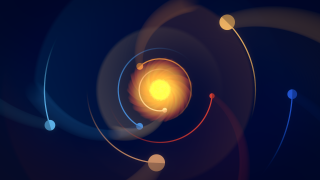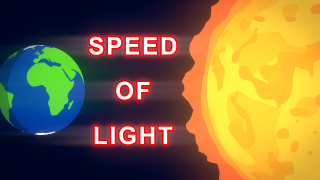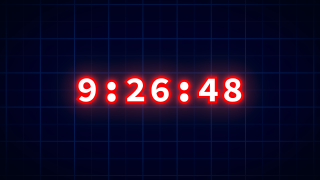Traveling the Solar System at the SPEED OF LIGHT
Published: August 10, 2024 at 9:02 PM (PT)
9:27:31
(1021530 frames/30fps) Resolution:1920x1080
(FHD) Most Rewatched:9:16:03 to 9:27:31 Realtime Statistics...
30 Minutes...
Hour...
24 Hours...
Information Sources
https://www.iau.org/static/resolutions/IAU1976_French.pdf#page=9
NASA Sun Factsheethttps://nssdc.gsfc.nasa.gov/planetary/factsheet/sunfact.html
8 Planets Factsheethttps://blendertimer.com/factsheets/solar-system/planet-factsheet
5 Dwarf Planets Factsheethttps://blendertimer.com/factsheets/solar-system/dwarf-planet-factsheet
Asteroid Belt Factshttps://en.wikipedia.org/wiki/Asteroid_belt
Meteoriteshttps://cosmosmagazine.com/space/earth-hit-by-17-meteors-a-day
Earthquakeshttps://www.usgs.gov/programs/earthquake-hazards/cool-earthquake-facts
World Populationhttps://www.theworldcounts.com/challenges/toxic-exposures/polluted-bodies/how-many-babies-are-born-a-day
Lightning Strikeshttps://www.weather.gov/fgz/Lightning
Oort Cloud Factshttps://science.nasa.gov/solar-system/oort-cloud/facts
Graphic Sources
https://pixabay.com/vectors/sun-star-space-solar-light-bright-8328084
Mercury (Daniel Roberts)https://pixabay.com/vectors/mercury-planet-space-terrestrial-8233227
Venus (Daniel Roberts)https://pixabay.com/vectors/venus-planet-space-terrestrial-8233225
Earth (Daniel Roberts)https://pixabay.com/vectors/earth-planet-space-terrestrial-8233221
Mars (Daniel Roberts)https://pixabay.com/vectors/mars-planet-space-terrestrial-8233226
Asteroid (Daniel Roberts)https://pixabay.com/vectors/asteroid-meteor-space-meteorite-8648910
Ceres (Daniel Roberts)https://pixabay.com/vectors/ceres-planet-asteroid-terrestrial-8236207
Meteor (Daniel Roberts)https://pixabay.com/vectors/asteroid-meteor-space-meteorite-8648912
Jupiter (Daniel Roberts)https://pixabay.com/vectors/jupiter-planet-space-terrestrial-8233223
Saturn (Daniel Roberts)https://pixabay.com/vectors/saturn-planet-space-terrestrial-8233220
Uranus (Daniel Roberts)https://pixabay.com/vectors/uranus-planet-space-terrestrial-8233222
Neptune (Daniel Roberts)https://pixabay.com/vectors/neptune-planet-space-terrestrial-8233219
Pluto (Daniel Roberts)https://pixabay.com/vectors/pluto-asteroid-planet-terrestrial-8236209
Haumea (Daniel Roberts)https://pixabay.com/vectors/haumea-dwarf-planet-terrestrial-8236206
Makemake (Daniel Roberts)https://pixabay.com/vectors/makemake-planet-terrestrial-ball-8236208
Eris (Daniel Roberts)https://pixabay.com/vectors/eris-planet-terrestrial-satellite-8236210
Audio Sources
N/A
Journey Through Nothing-Ambient Background Loop (Daniel Roberts)https://pixabay.com/music/adventure-journey-through-nothing-ambient-background-loop-232364
Chapters
The Sun
3:10Mercury
5:58Venus
8:16Earth
12:37Mars
17:05Some Random Asteroid
22:58Ceres
27:09Another Random Asteroid
43:14Jupiter
1:19:34Saturn
2:39:20Uranus
4:10:57Neptune
5:28:00Pluto
5:56:40Haumea
6:16:34Makemake
9:36:46Eris
We're currently traveling at the speed of light.
In our visualization at least.
To put the vast distances
of our Solar System into perspective,
we're traveling at the speed
of light from the Sun and we'll
explore the rest of the Solar System.
Oh and, no, we're not accounting
for relativity in our visualization.
This is Mercury.
Or...maybe I should say..
that was Mercury since...
it's gone now.
And...there went Venus.
Here's Earth! On this planet,
several millions of kilometers
from the Sun, there is someone
watching an extremely long video
demonstrating the size of the
Solar System.
This is Mars. And this is empty
space...yet again.
What? All that build up for
some...random asteroid. Ah...
I guess that must mean we're
entering the Asteroid Belt.
Oh! There's Ceres! The first
dwarf planet on our tour! ...just
casually sitting there in the
middle of the Asteroid Belt.
What? Again?
These asteroids are annoyingly
anticlimactic. Although, I guess
BlenderTimer probably put that
there to mark the end of the Asteroid Belt.
Oh wait...I am BlenderTimer...
I guess I should know shouldn't I...
There's Jupiter. Gigantic planet.
But also...say it with me...very,
very tiny.
Look, I have to break up the
monotony of his video somehow.
Here goes Saturn, the second
largest planet and one with a
beautiful design!
You know, I guess the largest
thing in the Solar System is this grid.
I mean, we've traveled quite a
long distance and it's still there.
There's Uranus. And no, Uranus
is not the coldest planet. Between
Neptune and Uranus, Uranus has
the coldest recorded temperature,
but Neptune has the coldest average
temperature. So Neptune is technically
the coldest.
I've only gotten like 473 quintillion
comments saying Uranus is the
coldest planet...
That may or may not have been
a slightly major exaggeration.
And...there goes Neptune. The
last major planet, but far from
the edge of the Solar System!
And here's Pluto. The largest
dwarf planet.
And yes, Pluto is larger than Eris.
Pluto is 44 kilometers larger
in diameter than Eris, making
it the largest dwarf planet. I
only received a few billion comments
about that...
Or maybe more like a few dozen,
but anyway..
This is Haumea! A very flat
dwarf planet.
That was Makemake. Just in case
you couldn't read.
And I guess our exploration
will have to end here. During
this time around 7 meteorites
passed through the atmosphere
and hit Earth, around 539 earthquakes
have occurred, about 152,000 people
were born, there have about 3.
4 million lightning strikes, and
Jupiter has experienced nearly
an entire day.
But this is not the edge of
the Solar System, the edge of
the Solar System is still 1 year
and 7 months distant.


 August 10, 2024
August 10, 2024 August 10, 2024
August 10, 2024